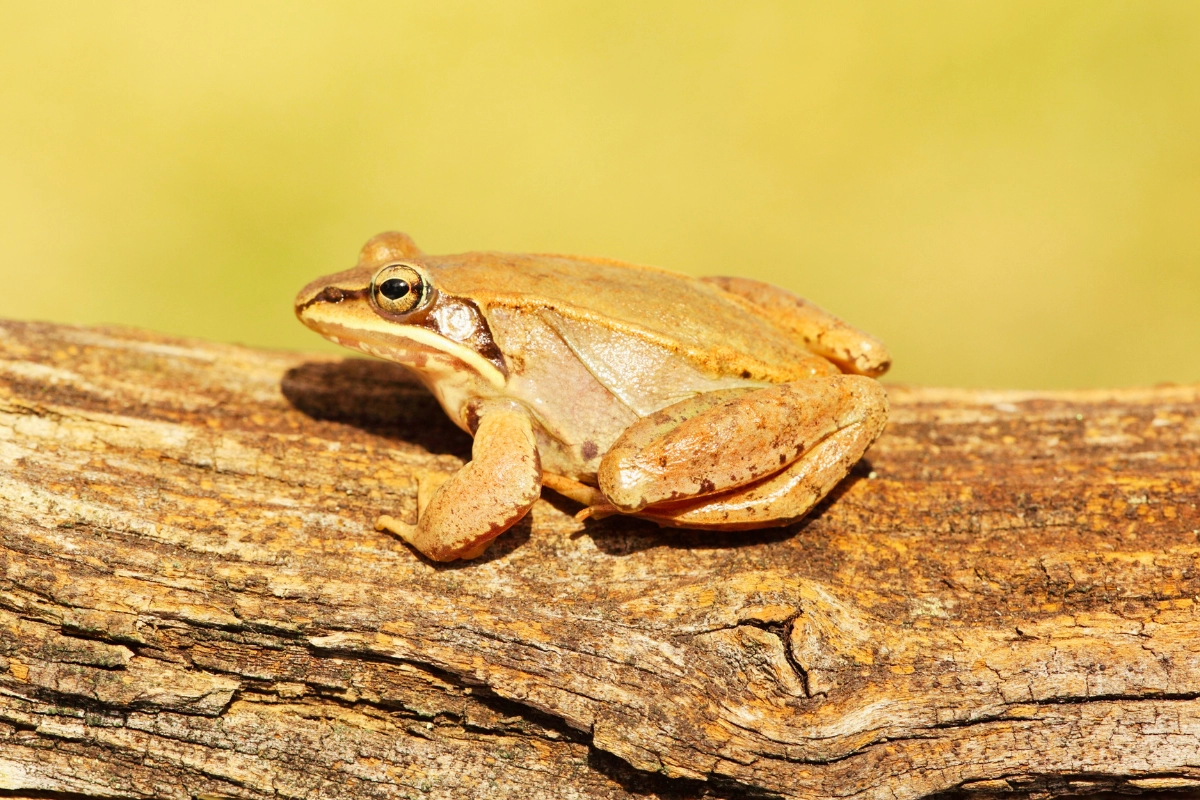When I first considered getting a wood frog as a pet, I had no idea how unique and fascinating these little amphibians could be. They’re not just any ordinary frogs; they have this incredible ability to survive in freezing temperatures by practically freezing themselves! But what I quickly learned is that keeping a wood frog happy and healthy requires careful attention to its habitat. If you’re anything like me and love creating an environment that mirrors nature, you’ll find this process both challenging and rewarding.
In this article, I’ll share everything I’ve discovered about building the perfect home for your wood frog. From setting up the right enclosure to maintaining the ideal temperature and humidity, these tips will help you avoid the mistakes I made early on. Let’s dive into what it takes to create a thriving environment for your wood frog and ensure it lives a long and healthy life!
Understanding Wood Frogs’ Natural Habitat
When I started researching wood frogs, I was amazed by their natural adaptability. Did you know these frogs are native to North America and thrive in forests, wetlands, and even tundra-like areas? They’re masters of survival, enduring freezing winters by allowing their bodies to freeze and then thawing out as temperatures rise. It’s incredible, but it also means their environment plays a huge role in their health.
To recreate this in a home setting, it’s essential to understand their natural habitat. Wood frogs are accustomed to moist environments with plenty of hiding spots, leaf litter, and shallow water sources. Temperature and humidity are critical; they’re most comfortable in cool conditions ranging from 16-22°C (60-72°F). By mimicking these conditions, I was able to make my wood frog feel right at home. Trust me, when you see your pet thriving in a naturalistic setting, you’ll know it’s worth the effort!
Choosing the Right Enclosure
When I set out to choose an enclosure for my wood frog, I quickly realised that size and setup matter more than I initially thought. A small glass tank might seem sufficient, but giving your wood frog enough space to hop and explore is key to keeping it active and healthy. For a single wood frog, I recommend a 10-gallon tank at minimum, but if you plan to house more, consider a larger size.
I opted for a secure, escape-proof terrarium with a screen lid to ensure proper ventilation. Wood frogs can be surprisingly agile, so having a well-sealed enclosure is non-negotiable. I also added a layer of soil substrate at the base, along with moss and leaf litter to replicate their natural environment. Believe me, watching your wood frog explore its surroundings is incredibly rewarding—it’s like having a piece of nature right in your home!
Maintaining Proper Temperature and Humidity
When I first set up my wood frog’s habitat, I learned pretty quickly that getting the temperature and humidity just right was critical. Wood frogs thrive in cooler environments, so I kept the temperature between 16-22°C (60-72°F). To maintain this, I placed the enclosure away from direct sunlight and used a small thermometer to monitor the levels. You’d be surprised how quickly an enclosure can overheat if it’s not in the right spot.
Humidity was another challenge, but misting the tank once or twice a day with dechlorinated water worked perfectly. A hygrometer helped me ensure the humidity stayed between 50-80%, which is ideal for wood frogs. I also found that adding live plants and a shallow water dish naturally boosted the humidity levels. Once everything was balanced, my wood frog seemed far more active and comfortable—it’s clear they really depend on a stable environment to thrive!

Water Requirements for Wood Frogs
When it comes to water, I quickly realised that clean, dechlorinated water is an absolute must for wood frogs. Since they absorb water through their skin, any contaminants can have a serious impact on their health. I set up a shallow water dish in the enclosure, making sure it was large enough for soaking but not too deep to avoid any risk of drowning.
I made it a habit to change the water daily to keep it fresh and clean. Trust me, you’ll thank yourself for staying on top of this—dirty water can quickly lead to bacterial growth. Additionally, I ensured that the water was always at room temperature to avoid shocking my frog. Over time, I noticed that having this small water feature not only helped with hydration but also contributed to maintaining proper humidity levels in the enclosure. It’s a simple yet essential part of keeping your wood frog happy and healthy!
Feeding Practices in the Habitat
Feeding my wood frog turned out to be one of the most fascinating aspects of their care. These little amphibians are insectivores, so a diet of live insects like crickets, fruit flies, and small worms is ideal. I made sure to source insects from reputable suppliers to avoid exposing my frog to harmful pesticides.
When feeding, I placed the insects in a small, clear area of the enclosure to make them easier for the frog to spot. Trust me, watching your wood frog catch its prey is both entertaining and rewarding—it’s like a mini nature documentary happening right in front of you! To ensure balanced nutrition, I also dusted the insects with a calcium and vitamin D3 supplement about once a week. This is especially important for wood frogs in captivity, as they don’t get the same sunlight exposure as they would in the wild.
I quickly learned not to overfeed, as leftover insects can stress your frog or even damage the enclosure’s plants. By sticking to a feeding schedule of 2-3 times a week, I kept my wood frog well-fed and content without disrupting its habitat.
Cleaning and Maintenance of the Habitat
One of the most important lessons I learned about keeping a wood frog as a pet is the significance of regular cleaning and maintenance. A well-maintained habitat not only ensures your frog’s health but also prevents unpleasant odours or bacteria buildup. I developed a routine that made cleaning manageable and effective.
Every week, I removed uneaten food, waste, and any debris from the enclosure. This kept the environment clean and reduced the risk of harmful bacteria forming. Once a month, I did a deeper clean by carefully relocating my frog to a temporary container. I then replaced a portion of the substrate, cleaned the water dish with non-toxic soap, and wiped down the enclosure using a solution of water and white vinegar (avoiding harsh chemicals that could harm my frog).
The key is to clean just enough to maintain hygiene without disrupting the natural balance of the habitat. Over time, I noticed my wood frog was more active and healthy, which reassured me that my cleaning routine was working. Consistency really is the key to creating a safe and thriving environment for your wood frog!

Monitoring Frog Behaviour and Health
When I first got my wood frog, I quickly realised how important it was to keep a close eye on its behaviour and overall health. These subtle little creatures have a way of letting you know when something isn’t quite right, but you need to know what signs to look for.
For instance, if your frog is hiding excessively, refusing to eat, or has dull skin, it might be stressed or unwell. I learned that changes in behaviour often signal issues with their habitat, like incorrect temperature or humidity levels. By monitoring my frog daily, I was able to adjust things like misting frequency or substrate moisture before small issues became big problems.
I also paid attention to physical signs of health. Healthy wood frogs should have clear eyes, smooth skin, and be active during their usual hours. If I ever noticed swelling, lethargy, or unusual spots, I’d consult a veterinarian familiar with amphibians. Proactive monitoring not only gave me peace of mind but also helped me build a stronger bond with my frog—it’s a joy to see them thrive under your care!
Conclusion
Creating and maintaining a healthy habitat for a wood frog isn’t just about following a checklist—it’s about developing a deeper connection with nature and understanding the unique needs of your pet. When I look at my wood frog thriving in its carefully crafted environment, I’m reminded of how rewarding this journey has been.
By understanding their natural habitat, choosing the right enclosure, maintaining ideal temperature and humidity, and providing clean water and a proper diet, you can ensure your wood frog lives a long, happy life. Regular cleaning and monitoring their health will help you catch any issues early and keep them comfortable.
Most importantly, the process of caring for a wood frog teaches patience, responsibility, and an appreciation for the natural world. If you’re ready to take on the challenge, you’ll find that having a wood frog as a pet is not only fascinating but also deeply fulfilling. With these tips in hand, I hope you’re inspired to create a thriving environment for your new amphibian friend!
FAQ
What is the lifespan of a wood frog?
Wood frogs typically live for about 3 to 5 years in the wild. However, with proper care in captivity, they can sometimes live longer, up to 7 years. Factors like diet, habitat quality, and overall health significantly influence their lifespan.
What are the benefits of the wood frog?
Wood frogs are fascinating creatures with unique biological traits. They contribute to ecosystems by controlling insect populations, serving as prey for larger animals, and helping maintain ecological balance. Their ability to survive freezing temperatures has also made them subjects of scientific research, offering insights into medical advancements like organ preservation.
How long can a wood frog hold its urine?
Surprisingly, wood frogs can hold their urine for months during hibernation! This adaptation helps them survive freezing winters by recycling nitrogen to protect their cells and tissues from damage while they are frozen.
What keeps a wood frog alive?
Several factors are vital to keeping a wood frog alive, including a suitable habitat with the right temperature (16-22°C/60-72°F) and humidity (50-80%), access to clean, dechlorinated water, and a nutritious diet. In the wild, their survival depends on their ability to evade predators, find food, and adapt to extreme weather.
What is the diet of the wood frog?
Wood frogs are carnivorous and primarily feed on small insects like crickets, flies, beetles, and ants. In captivity, their diet can include feeder insects such as crickets, fruit flies, and small worms, occasionally supplemented with calcium and vitamins for optimal health.

